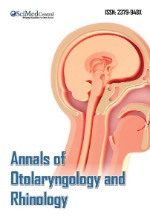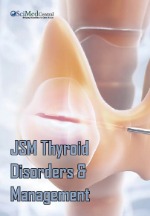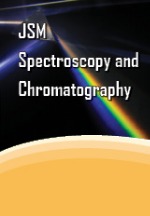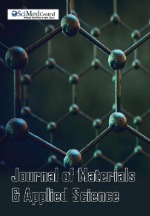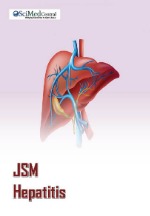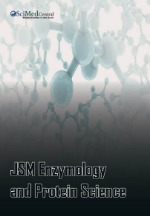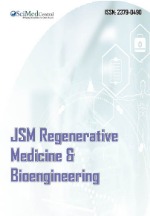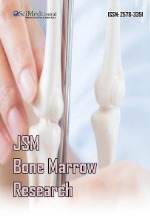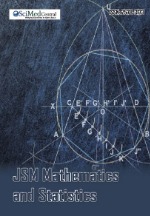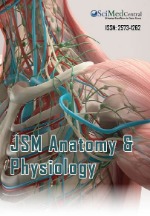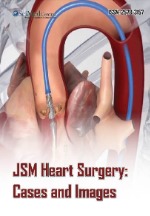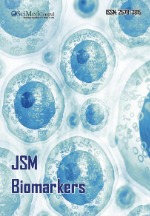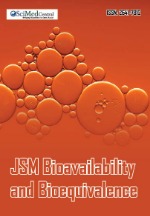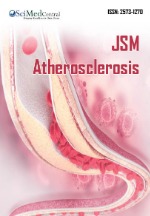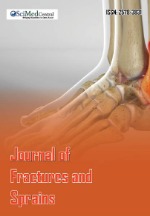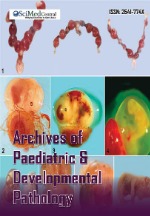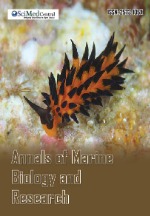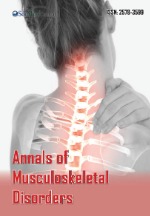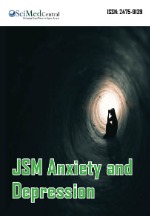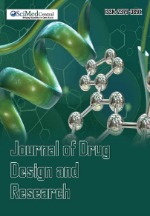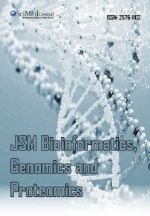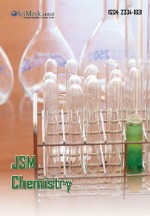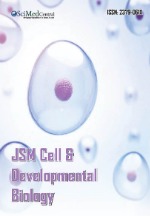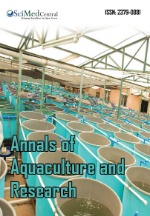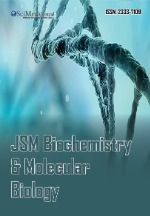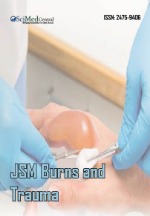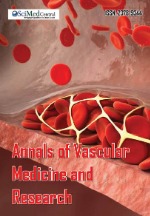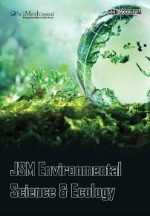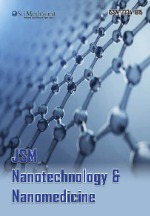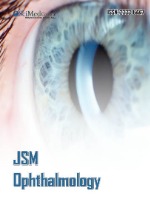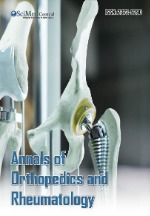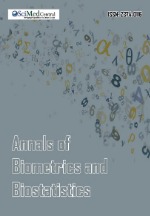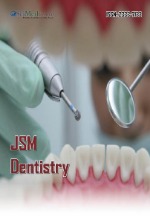Investigation the Anisotropic Feature Using Structural and Mechanical Profile Analysis of Zinc Oxide (ZnO) Thin Film Growth Mechanism within the Framework of Williamson-Hall Estimation by Novel Electrostatic Spray Deposition (ESD) Technique
- 1. Department of Electrical Engineering, Tokyo University of Science, 2641 Yamazaki, Noda, Chiba 278-8510, Japan
- 2. Department of Electrical Engineering, City University, Savar, Birulia, Dhaka, 1216, Bangladesh
- 3. Research Institute, RIST, Tokyo University of Science, Japan
ABSTRACT
The aim of this study is to investigate the anisotropic effect of a systematic and easy approach to Nanocrystalline ZnO (nZnO) thin film growth by employing the novel ESD technique at temperatures ranging from 300 °C to 500 °C. In this work, Zinc Chloride (ZnCl2) was used as the Zn source, which was dissolved in Ethanol (CH3CH2OH) to prepare three different 0.1 M concentrations of 20 ml for spray solution by ESD on conductive In2O3:Sn (ITiO)-coated alkali-free glass substrates. Next, Hydrochloric acid (HCl) was added to the prepared ESD solution in the following order: 0.0 M, 0.005 M, and 0.015 M, respectively. X-ray Diffraction (XRD) indicates the presence of hexagonal wurtzite structure for nZnO thin film. Structural Properties (STP) of the lattice phase were revealed using Bragg’s law. Moreover, the Mechanical Properties (MEP) of nZnO nanoparticles were examined using X-ray broadening utilizing Williamson-Hall (W-H) and size- strain plot methods. Strain, stress, and energy density parameters were computed for the diffraction peaks of all samples for high temperatures of 400 °C and, 500 °C exploiting the Uniform Deformation Model (UDM), Uniform Stress Deformation Model (USDM), Uniform Deformation Energy Density Model (UDEDM), and the Size-Strain Plot technique (SSP). The mean particle size data exhibited a near interrelationship with W-H analysis, SSP, and the Debye–Scherrer (D-S) methods at 500 °C temperature. The results from the XRD diffraction peak observations and properties analysis demonstrated the existence of an anisotropic countenance, which correlates with the excessive presence of leaving group (OH-) compounds in the ESD spray solutions. Due to excessive amount of OH- in the ESD spray solution, the ZnO thin film c-axis growth was suppressed and the a-axis growth was developed. The adhesion of anions was believed to be responsible for this suppression. The results and analysis also provided insight into how to develop a high-quality oxide-based crystal semiconductor that is economically viable for industrial and commercial applications of ESD-deposited semiconductor technology devices, specifically the growth mechanism for nZnO.
KEYWORDS
Abbas FI, Sugiyama M (2024) Investigation the Anisotropic Feature Using Structural and Mechanical Profile Analysis of Zinc Oxide (ZnO) Thin Film Growth Mechanism within the Framework of Williamson-Hall Estimation by Novel Electrostatic Spray Deposition (ESD) Technique. J Phys Appl and Mech 1(1): 1005.
CITATION
Abbas FI, Sugiyama M (2024) Investigation the Anisotropic Feature Using Structural and Mechanical Profile Analysis of Zinc Oxide (ZnO) Thin Film Growth Mechanism within the Framework of Williamson-Hall Estimation by Novel Electrostatic Spray Deposition (ESD) Technique. J Phys Appl and Mech 1(1): 1005.
INTRODUCTION
ZnO, often known as II–VI semiconductor in material science, is an important and promising material with many typical properties such as wurtzite structure, transparency in the visible range solar cells [1], light-emitting diodes [2,3], photocatalysis [4], gas sensors [5], catalysis [6], laser diodes [7], varistors [8] and sensors [9], is promising. nZnO is a widely recognized n-type semiconductor with an enormous band gap of approximately 3.37 (eV) and a substantial exciton binding energy of around 60 (meV) at ambient temperature [10]. Nevertheless, the application of techniques for ZnO nanostructures is limited by variables including high temperature, specific gas concentration, toxic chemical reagents, and costly equipment. The objective for this work is to develop a simple and economical approach that may be readily scaled for commercial applications. Well-established methods for depositing nZnO thin films include dry processes like sputtering [11] and pulsed laser deposition [12], as well as
wet processes like chemical bath deposition [13], mist chemical vapor deposition [14], and spray pyrolysis [15].
At the present circumstances, this study aims sixfold to investigate not only the nZnO thin film growth mechanism within the framework of the ESD development technique but also use different crucial model analysis of the nanocrystal particle sizes for considering oxide-based semiconductor technology. Firstly, literature review conclusions indicate that a comprehensive investigation utilizing these models for the growth mechanism of ZnO thin films via the ESD technique has not been documented within this specific combination of samples and temperature ranges. Secondly, ESD approach offers not only user-friendly functionality but also significant industrial advantages, including its capacity to effectively cover extensive regions due to its uncomplicated and easily accessible nature. Thirdly, ESD method enables deposition without requiring a vacuum, is reasonable, and offers relatively easy control of the composition ratio and doping. Fourthly, in order to distribute the solution from the metal nozzle edge in ESD, a DC high voltage is positioned between the nozzle and the conductive substrate. When the flow rate and electric field are adjusted to match the viscosity and resistivity of the solution, the spray shape known as the “cone-jet mode” [13] is illustrated in figure 1. As the cone-jet mode is engaged in, the droplets that are created are of the same size [14]. Fifth, from the physics point of view, Coulomb forces cause the charged droplets to reject each other, preventing them from colliding. These features allow for the creation of dense and homogeneous thin films using ESD with cover the large area in the ITiO substrate. Sixth, comparing the impact of HCl on the formation of ZnO thin films using the innovative ESD approach. The results demonstrate that incorporating the highest concentration of HCl into the spray solution prevents the c-axis crystal formation of ZnO thin films. The adhesion of anions was thought to be accountable for this suppression.
Figure 1 Abbas, Journal of Physics: Applications and Mechanics: Schematic diagram of ESD
Furthermore, the ESD approach is not only user-friendly but also facilitates non-vacuum deposition, is cost-effective, and Furthermore, the ESD approach is not only user-friendly but also facilitates non-vacuum deposition, is cost-effective, and offers precise control over composition ratios and doping levels [16]. Now, the question arises about how to create a high-quality oxide semiconductor using the ESD route. It is well established that particle size and crystal morphology play important roles in the applications of thin-film semiconductors, which have driven the attention of researchers on the synthesis of nanocrystalline ZnO. This study advocates for a systematic development approach utilizing the innovative ESD method, which is contingent upon
modifying ESD temperatures and the acidic compositional ratio of the thin-film particle microstructure of the crystals. The particle size and morphology of ZnO nanoparticles will vary with the synthetic route adopted for the synthesis. It was understood that a perfect crystal would extend in all directions to infinity; however, no crystals are perfect due to their finite size. This deviation from perfect crystallinity is the reason for broadening of the diffraction peaks of materials. There are two main properties extracted from peak width analysis viz. crystallite size and lattice strain. Crystallite size is a measure of the size of a coherently diffracting domain, and the crystallite size of the particles is not generally the same as the particle size due to the presence of polycrystalline aggregates. In another, the growth of ZnO thin films using ESD from the D-S method, the W-H model, and the SSP model has not yet been analyzed, and experiments can be hard to do very easily. Therefore, conducting micro-level insight studies on crystal growth using these frameworks could be highly beneficial to reveal the presence of anisotropy, and providing a significant boost to the development of high-quality crystal growth in semiconductor research through innovative ESD mechanisms. These are additional essential reasons for studying the ZnO thin film crystal properties using these methods and model analyses.
This work represents earlier stage in developing cost- effective and easy-to-use technologies that allow visible light to pass through without obstruction using the novel ESD technology for oxide-based semiconductor research studies.
MATERIALS AND METHODS
The zinc source utilized in this investigation was Zinc Chloride (ZnCl2 (98% Assay, ZnCl2=136.32), Lot. LEH7398, Mfg. Date. 2021.09, FUJIFILM Wako Pure Chemical Corporation). The solutes were ethanol (CH3 CH2 OH (99.5), Cat. No. 14033-70, FW: 46.07, KANTO CHEMICAL CO, INC), and deionized water (H2 O). ZnO films were deposited using ESD on a conductive In2 O3 :Sn (ITiO) coated alkali-free glass substrate. Figure 1a,b displays the ESD schematic experimental diagram. For the ESD spray method, 20 ml of three (3) different spray solutions were made by changing the molar concentrations of HCl. The generalized procedures were followed for the preparations with a 0.1 M concentration spray solution; 16 ml of CH3 CH2 OH was taken in a glass beaker. The density of CH3 CH2 OH was 0.78945 g/ cm3. Next, 0.2726 g ZnCl2 was added with the CH3 CH2 OH in the glass beaker. To make the solution homogeneous, it was heated for up to 20 minutes in the magnetic stirrer with a hot plate (ADVANTEC SR/350). The temperature was considered 150 oC for the magnetic stirrer with the hot plate. After that 4 ml of H2 O was added to the solution and heated for 10 more minutes for the uniformity of the solution. Subsequent to these methods, three distinct ESD spray solutions were made. Afterwards, those produced solutions were mixed with 0.0 M, 0.005 M, and 0.015 M of HCl, respectively. The generalized formula was used to prepare the desired HCl concentration, which is [HCl/(HCl + dilute H2 O)].
In order to investigate the growth mechanism of ZnO, on the surface of conductive ITiO coated alkali-free glass substrates, nine (9) ITiO substrates have been used with sizes 7.5 mm × 7.5 mm. ESD spray was performed for 5 minutes and 30 seconds at a solution flow rate of 2.0 ml/h on the ITiO substrate surface, and an applied voltage between nozzle and substrate of 8 kV during spraying. During the spraying cycle, the ESD temperature was maintained in the environment at 300 °C, 400 °C, and 500°C, respectively. The crystallographic orientations of the ZnO thin films were evaluated using X-ray diffraction (XRD; Rigaku Ultima IV, Rigaku SmartLab). The relevant sections also addressed the mathematical equations used for this estimation. In this study, the XRD results were used, which correspond to the specific diffraction planes for the ZnO thin film, to evaluate the various model analysis, and reveal the growth mechanism and correlation of anisotropic growth with the HCl concentration in the ESD spray solution. To accurately assess the variability of SP and MEP, the elevated temperatures of 400 °C and 500 °C have been selected, while excluding a small range of 300 °C. The updated Origin 2018 software was utilized for comprehensive data analysis within the frame work of W-H analysis; SSP analysis; D-S methods and graph plotting.
RESULTS AND DISCUSSION
XRD analysis
At temperatures between 300 ° C-500 ° C, the consequence of adding HCl on the crystal formation of ZnO thin films was examined. The XRD patterns of ZnO thin films with HCl concentrations of 0.0 M, 0.005 M, and 0.015 M in the precursor solution are shown in figure 2. The ITiO thin-film diffraction is also shown at the bottom of figure 2. The undoped ZnO thin film had strong diffraction peak at 002 plane, other peaks 100, 101 and 102 are found relatively little strong compared with 002 plane.
Figure 2 Abbas, Journal of Physics: Applications and Mechanics: Schematic diagram of ESD.
The 0.005 M of HCl-added ZnO thin films exhibited the same strong peaks as the ZnO 002 and 102 diffraction peaks, on the ITiO substrate for 500 °C temperature. Other temperature results are not significant for this concentration. However, the0.015 M of HCl-addition solution for ZnO thin films exhibited very different results compared with the previously mentioned results. The 100 plane consecutively developed in the diffraction pattern for the ZnO thin film other peaks do not appear except for the 002 plane at 400 °C and 500 °C temperatures. But these peaks were relatively weak contrast with the prior results.
The results obtained from the XRD may lead to the complex reaction mechanism that occurred in the complex formation probability of the ESD solution during the ZnO thin film growth scheme. Nonetheless, considerable detrimental effects of HCl addition on crystal structure were noted. HCl can function as a dopant, contingent upon the requisite quantity for formulating the ESD solution. To yet, less research has been conducted on the thin film growth mechanism in ESD. The ESD investigation of the oxide thin film, specifically NiO, demonstrated significant potential for advancing thin film techniques through ESD [14,17]. In the NiO study, [17] found that increasing the ESD process time from 3 to 10 min resulted in an increase in the thickness of NiO thin films from 70 to 300 nm. On the other hand, [14] confirmed that the soft technique of ESD allows for good quality crystal growth in the oxide-based thin film growth mechanism under investigation the surface roughness and morphology. Those studies on NiO also confirmed that thicker thin films displayed a higher intensity and a narrower Full Width at Half Maximum (FWHM), with a value of approximately 0.28°, a value that closely aligns with the oxide- based thin film growth mechanism. The current study confirmed that the ZnO thin film growth was 100 nm for a deposition duration of 5 minutes and 30 seconds at the ESD framework. However, by adjusting the ESD parameters, namely, (i) the spray flow rate on the ITIO substrate’s surface; (ii) the distance between the substrate’s surface and the spray syringe’s nozzle; and (iii) the deposition time, it is easy to control the thickness of the ZnO thin film. Compare those two works on NiO to the present work on ZnO thin film by the ESD technique; the gradual changing pattern was revealed on the XRD among 100 and 002 diffraction plane. This changing trend led us to work on further analysis of the crystal lattice quality from the microstructural perspective of energy density, lattice strain, and lattice crystalline profile using the ESD mechanism.
Effect of ESD temperature on Structural Properties (STP)
In this section STP will be elaborately discussed from ESD point of view. Usually, ZnO crystallizes in the wurtzite structure, which has oxygen atoms arranged in a hexagonal close-packed pattern and zinc atoms taking up half of the tetrahedral sites. The Zn and O atoms exhibit tetrahedral coordination with each other, resulting in another, resulting in an identical position. The Zn structure is characterized by an open configuration, where all the octahedral sites and half of the tetrahedral sites are unoccupied. According to Bragg’s law [15],
n = 2dcosθ (1)
where n is the order of diffraction (usually n=1), λ is the X-ray wavelength and d is the spacing between planes of given Miller indices h, k and l. In the ZnO hexagonal structure, the plane spacing d is related to the lattice constants a, c and the Miller indices by the following relation [15],
Considering the first-order approximation, n =1, equation (2) can be written:
Following the equation (3), the lattice constant, a for the (100) plane is calculated by [15],
Similarly, for the (002) plane, the lattice constant c is calculated by the equation (3), [15].
Figure 3 displays the calculated lattice parameters a (Å), and c(Å) using equation (4) and (5) for this study. It is well known that the lattice parameters are temperature dependent, i.e. an increase in temperature leads to expansion of the lattice [18-21]. The diffraction peaks, i.e., (002) and (100), have been selected to calculate these structural properties for different ESD temperatures. It can be noticed that the aspect ratios are very dynamic, i.e., the ESD temperature has a very significant impact on the aspect ratio values (c/a∼1.57-1.61). [22] confirmed in their work that polycrystalline ZnO was enhanced as the Radio Frequency (RF) plasma power increased, but aspect ratios are constant, ∼1.732, i.e., the RF plasma power does not impact the aspect ratio values. Reeber et al. determined the lattice constants of the ZnO wurtzite structure to be c = 5.2075 Å and a = 3.25 Å at room temperature. They found the c/a ratio to be 1.633 [23]. Karnati et al. showed that the Pulsed Laser Deposition (PLD) technique has a remarkable impact on the aspect ratio deviation which is very inconsistent with earlier mentioned results [22]. The high aspect ratio is a result of the high surface-to-volume ratio of the ZnO nanostructure [24]. Therefore, the high surface area- to volume ratio of the ZnO nanostructure boosts the electron- hole pair recombination, which results in a quicker decay time [25]. On the other hand, the present results indicate that the ESD technique is effective for managing low concentrations of HCl compared to high concentrations of acidic solutions and aspect ratio was found in between 1.57∼1.58. In figure 3b, a consistent with crystal growth theory, but effective increase of lattice constant for (002) diffraction plane was observed for 500 °C temperature (of 0.005 M HCl). Fundamental crystal growth theory, which holds that the (002) plane of ZnO exhibits the lowest surface energy and that surface energy is the primary component influencing crystal structure formation, serves as the foundation for the fabrication of c-axis-oriented ZnO thin films [26].
Figure 3 a,b: Abbas, Journal of Physics: Applications and Mechanics: Lattice parameter for ZnO thin film at 300°C-500°C temperatures using ESD technique.
Effect of ESD temperature on Mechanical Properties (MEP)
Scherrer method
XRD can be employed to assess peak broadening in relation to crystallite size and lattice strain caused by dislocation [22]. The mean crystal size (D) of the fabricated ZnO at various ESD temperatures has been evaluated utilizing Scherrer equation (6), where D is the particle size in broadening method using the Scherrer equation (6), λ the wavelength
of the radiation (1.54056 Å for CuKα radiation), K is a constant equal to 0.94, βD is the peak width at half-maximum intensity and θ the peak position. The estimated values of D (nm) were found between 47.8 ∼ 49.5 (nm). The breadth of the Bragg peak is a combination of both instrument and sample dependent effects. To decouple these contributions, it is necessary to collect a diffraction pattern from the line broadening of a standard material. such as silicon to determine the instrumental broadening. The instrument-corrected broadening [21] D corresponding to the diffraction peak of ZnO was estimated using the relation: The crystallite size is defined as the dimension of a coherently diffracting domain, which may not correspond to the particle size.
Williamson-hall method: Strain-induced broadening resulting from crystal defects and distortions is expressed by the equation ε= β/tanθ. An exceptional characteristic of Eq. (6) is its dependence on the diffraction angle θ. The W-H approach does not exhibit a 1/cos θ dependency, as observed in the Scherrer equation, but rather fluctuates with tan θ. This essential distinction facilitates the differentiation of reflection broadening when both microstructural factors small crystallite size and micro-strain coexist. The various methodologies outlined and argue that size and strain broadening are cumulative factors contributing to the overall integral breadth of a Bragg peak [27]. The unique θ dependence of both effects established the foundation for the differentiation of size andstrain broadening in W-H study. Eq. (8) represents the UDM, where the strain was assumed to be uniform in all crystallographic directions, thus considering the isotropic nature of the crystal, where all the material properties are independent of the direction along which they are measured. In figure 4, the variable (βcosθ) is displayed versus (4sinθ) for the preferred orientation peaks of ZnO in the wurtzite hexagonal phase. The slope and y-intercept of the fitted line denote strain and particle size, respectively. The graphs indicated a positive strain for the nZnO. This strain could stem from the lattice expansion noticed in the calculation of lattice parameters. The results of the UDM analysis for the nZnO are presented in Fig. 4 for 400 ° C and 500 ° C temperature, respectively
Figure 4 a,b: Abbas, Journal of Physics: Applications and Mechanics: Lattice parameter for ZnO thin film at 300°C-500°C temperatures using ESD technique.
A generalized version of Hooke’s law describes the strain in the USDM and plotted in figure 5. It only keeps the linear relationship between stress and strain, which is shown by σ =ε,Yhkl, where σ is the crystal’s stress and Yhkl is its Young’s modulus, also called its modulus of elasticity. This equation serves as an approximation for a significantly small strain. Given the presence of a minor strain in the ZnO nanoparticles, Hooke’s law is applicable in this context. As strain increases more, the particles diverge from this linear proportionality. Utilizing the Hooke’s law approximation in Equation (8) produces:
Young’s modulus is calculated to be 127 GPa for a hexagonal crystal [21]. The nZnO that were calcined at various temperatures were plotted using (4sinθ)/Yhkl on the x-axis and (βhkl cosθ) on the they-axis. Figure 5 illustrates the USDM plots for ZnO nanoparticles calcined at temperatures of 400 ° C and 500 ° C. The stress derived from the slope of the fitted line is somewhat higher for the nZnO calcined at 400 ° C compared to those calcined at 500 ° C.A different approach for calculating the energy density of a crystal is the Uniform Deformation Energy Density approach (UDEDM). Equation (10) presumes that the crystals possess a homogenous and isotropic character. Nevertheless, in numerous instances, the presumption of homogeneity and isotropy is unwarranted. Obligingly, the proportionality factors associated with the stress-strain relationship become unified when considering the strain energy density. For an elastic system that adheres to Hooke’s law, we can use u = (ε2 Yhkl)/2 to find the energy density u (energy per unit).
Equation (10) can be reformulated to be consistent with the energy and strain relationship. Graphs of (βhkl cosθ) against 4sinθ(2u/Yhkl )1/2 were generated, and the data were fitted to linear quations.
Figure 5 a,b: Abbas, Journal of Physics: Applications and Mechanics: USDM model analysis of the effect of 0.0 M, 0.005 M, and 0.015 M HCl on the ZnO growth mechanism at 400°C and 500°C temperatures using the ESD technique.
The anisotropic energy density u was derived from the slope of these lines, whereas the crystallite size D was obtained from the y-intercept; refer to figure 6. At one point the equation was σ = εY and u = (ε2 Yhkl)/2 where the stress was calculated as u = (σ2/ 2Yhkl).The results of these graphs indicate a minor variation in the energy density of the ZnO nanoparticles with alterations in the ESD temperature.
Figure 6 a,b: Abbas, Journal of Physics: Applications and Mechanics: USDM model analysis of the effect of 0.0 M, 0.005 M, and 0.015 M HCl on the ZnO growth mechanism at 400°C and 500°C temperatures using the ESD technique.
Size-strain plot method: The associated Williamson-Hall plot indicated that line broadening was predominantly isotropic. This signifies that the diffracting domains were isotropic and that a micro-strain contribution was present. An average SSP, which preferentially minimizes the influence of data from reflections at high angles, where precision typically diminishes, can provide a more accurate assessment of the size-strain parameters in instances with isotropic line broadening. This approximation suggests that a Lorentzian function characterizes the “crystallite size” profile, and a Gaussian function represents the “strain profile” [28]. Consequently, they possess: K is a constant that varies with particle shape; for spherical particles, it is expressed as 3/4. In figure 7, akin to the W-H techniques, the term 2 ( d hkl Cos hkl β hkl θ) is graphed with respect to (d Cos hkl hkl hkl) 2 d Cos hkl hkl hkl for all-orientation peaks of nZnO exhibiting the wurtzite hexagonal phase, spanning 2θ = 15° to 2θ = 50° . The particle size is ascertained from the slope of the linearly fitted data, whereas the root of the y-intercept yields the strain.
Figure 7 a,b: Abbas, Journal of Physics: Applications and Mechanics: SSP model analysis of the effect of 0.0 M, 0.005 M, and 0.015 M HCl on the ZnO growth mechanism at 400°C and 500°C temperatures using the ESD technique.
The results obtained from the W-H method by UDM, USDM, UDEDM models and SSP method are summarized in tables 1,2 for 400 ° C and 500 ° C temperatures, respectively. The values of average crystallite size of the nZnO obtained from the different models are found to be different in mode, which indicates the existence of an anisotropic phenomenon. However, the average crystallite size obtained from the Scherrer formula which are ranging 47.8 ∼ 49.5 (nm) and the SSP analysis show very close values for both 400 ° C and 500 ° C temperatures. Other models show greater variation because of the difference in averaging the particle size distribution and the clear indication of anisotropic phenomena. By inspection of the plots, it appears that the results of the SSP model showed unerring crystallite size for both the temperature ranges, which are supportive to the crystal theory for the ZnO growth mechanism. On the other hand, low HCl mixing ratio crystal growth showed optimum nature in anisotropic energy density functions compared to high acidic samples and non-mixing ESD solution’s samples for the analysing temperatures. Perhaps this is related to the optimum amount of existence of the leaving group (OH-) compounds in the ESD spray solutions. The excessive amount may lead to the anisotropic nature of the thin films, which may be consistent with the critical formation in the liquid organic composition phase. The mirror image can also be seen strain and stress exploration of ZnO thin film by ESD.
Tables 1: Parameters related to MEP for synthesized ZnO nanoparticles at 400 °C by the novel ESD technique.
|
Name of Model |
Temperature (°C) |
Type of Sample |
Crystallite D (nm) |
Strain ε (%) |
Stress (σ) |
Anisotropic Energy Density ued |
|
UDM |
400° |
0 M HCl |
11.65 |
6.30 ×10-4 |
|
|
|
0.005 M HCl |
87.17 |
0.00362 |
|
|
||
|
0.015 M HCl |
45.44 |
2.34 ×10-3 |
|
|
||
|
USDM |
400° |
0 M HCl |
11.64 |
6.28 ×10-7 |
7.99 ×107 |
|
|
0.005 M HCl |
87.20 |
3.61 ×10-6 |
4.59 ×108 |
|
||
|
0.015 M HCl |
45.44 |
9.29 ×10-6 |
1.08 ×109 |
|
||
|
UDEDM |
400° |
0 M HCl |
11.65 |
-1.42 ×10-11 |
-1797.55 |
1.27 ×10-8 |
|
0.005 M HCl |
87.17 |
1.2 × 10-11 |
1526.07 |
9.17 × 10-9 |
||
|
0.015 M HCl |
45.45 |
2.77 ×10-11 |
3521.59 |
4.88 ×10-8 |
||
|
SSP |
400° |
0 M HCl |
34.0 |
5.70 ×10-6 |
7.24 ×105 |
2.06 |
|
0.005 M HCl |
31.30 |
4.09 ×10-4 |
5.19 ×107 |
1.06 ×104 |
||
|
0.015 M HCl |
26.80 |
4.11 ×10-3 |
5.22×108 |
1.07×106 |
Table 2: Parameters related to MEP for synthesized ZnO nanoparticles at 500 °C by the novel ESD technique.
|
Name of Model |
Temperature (°C) |
Type of Sample |
Crystallite D (nm) |
Strain ε (%) |
Stress (σ) |
Anisotropic Energy Density ued |
|
UDM |
500° |
0 M HCl |
54.35 |
1.21 ×10-4 |
|
|
|
0.005 M HCl |
56.57 |
0.0045 |
|
|
||
|
0.015 M HCl |
29.74 |
3.56 ×10-3 |
|
|
||
|
USDM |
500° |
0 M HCl |
54.36 |
1.01 ×10-3 |
7.98×107 |
|
|
0.005 M HCl |
39.49 |
3.94 ×10-4 |
3.10 108 |
|
||
|
0.015 M HCl |
29.75 |
8.38 ×10-6 |
1.06 109 |
|
||
|
UDEDM |
500° |
0 M HCl |
114.55 |
6.91 × 10-12 |
877.24 |
3.03 × 10-9 |
|
0.005 M HCl |
39.50 |
8.93 × 10-12 |
1133.93 |
5.06 × 10-9 |
||
|
0.015 M HCl |
29.75 |
2.37 ×10-11 |
3008.62 |
3.56 ×10-8 |
||
|
SSP |
500° |
0 M HCl |
74.1 |
8.35 ×10-5 |
1.06×106 |
4.43 ×105 |
|
0.005 M HCl |
58.70 |
1.95 ×10-4 |
2.48×107 |
2.42×106 |
||
|
0.015 M HCl |
46.80 |
2.79 ×10-3 |
1.06×106 |
4.94×108 |
Finally, the ESD technique on the conductive ITIO substrates revealed the ZnO thin film growth mechanisms. The XRD results in figure 2a-c show systematically how a ZnO thin film formed on the conductive ITiO-coated alkali-free glass base. In the absence of HCl, and a low concentration of HCl mixing solution (0.005 M), the ZnO thin film crystal orients with the (002) crystal plane. The peak strength significantly decreased as the amount of HCl increased (0.015 M). This is a very interesting phenomenon that correlates the existence of the anisotropic nature that arises in the developed ZnO thin film with increasing the HCl concentration. This is perhaps due to excessive presence of leaving group (OH-) compounds in the ESD spray solutions for the case of high concentration (0.015 M HCl) acidic ratio. Because, the high concentration acidic solution creates the excessive number of
[H] + and confined with [O]-. Later, this confinement process creates excess amount of leaving group (OH-) in the in the ESD spray solution. As a result, the ZnO thin film c-axis growth was suppressed, and a-axis crystal growth was developed, which was found to be very weak in the peak strength.
After analyzing the current progressive work with XRD profile analysis and further modelling investigation of the crystal growth of ZnO thin film by the novel ESD scheme, we proposed the formation of a complex compound of the chloride chemical reaction that occurred in the solution which leads by non-acidic solution and high acidic ration solutions correlate with anisotropic characteristics of the semiconductor ZnO thin film by ESD. The excessive presence of the compound element in the solution impedes the growth of the ZnO thin film of the ITiO around the (002) diffraction plane. On the other hand, high acidic mixed solution promotes the (001) plane crystal growth for the ZnO nanoparticle thin film within this framework of ESD which may correlates the anisotropic properties of the newly developing technique of ESD for the oxide based thin films. Further investigations are also required to reveal the chemical reaction mechanism by ESD and as well as correlate with mircrostructure properties significance with this novel technique.
CONCLUSION
The innovative Electrostatic Spray Deposition (ESD) approach for the next generation of ZnO thin films on ITIO substrates, along with the solution dependency and analysis of these results, led us to make the following concluding remarks.
- This study demonstrated how the unique ESD recipe manifested ZnO nanoparticles and highlighted the anisotropic dominion using W-H model, SSP model, and W-S method.
- In contrast to usual methods, this anisotropic phenomenon shows that the low-acid solution only has a small effect on the crystal growth of the (002) diffraction plane, while the high-concentration acidic solution has a significant effect on it.
- The relationship between the complex formation of the ESD solution and anisotropy is primarily revealed within this framework. Perhaps this is related to the excessive amount of the leaving group (OH-) compounds present in the ESD spray solutions.
- These findings highlight the capability of ESD to enhance semiconductor thin-film technology, facilitating more economical and scalable production techniques.
Further investigation is also needed to determine the relationship between the solar cell property and the anisotropic phenomena by the novel ESD technique within different framework of composition and semiconductor material.
ACKNOWLEDGEMENTS
The authors express their sincere appreciation to Mr. Keito Okubo, and Mr. Kohta Hori for their support in completing the experiments and for the constructive discussions.
CONFLICT OF INTEREST
The authors of this work declare that they have no conflicts of interest.
REFERENCES
- Bitenc M, Orel CZ. Synthesis and characterization of crystalline hexagonal bipods of zinc oxide. Materials Research Bulletin. 2009; 44: 381-387.
- Choi YS, Kang JW, Hwang DK, Park SJ. Recent advances in ZnO-based light-emitting diodes. IEEE Transactions on Electron Devices. 2010; 57: 26-41.
- Baruah S, Dutta J. Hydrothermal growth of ZnO nanostructures. Science and Technology of Advanced Materials. 2009; 10: 013001(1-18).
- Dolabella S, Borzì A, Dommann A, Neels A. Lattice strain and defects analysis in nanostructured semiconductor materials and devices by high-resolution X-Ray diffraction: Theoretical and practical aspects. Small Methods. 2021; 6: 1-31.
- Zhu L, Zeng Z. Room-temperature gas sensing of ZnO-based gas sensor: A review. Sensors and Actuators A: Physical. 2017; 267: 242- 261.
- Alim A, Fonoberov V, Balandin A. Origin of the optical phonon frequency shifts in quantum dots. Applied Physics Letters. 2005; 86: 053103(1-3).
- Tennyson E, Doherty T, Stranks SD. Heterogeneity at multiple length scales in halide perovskite semiconductors. Nature Reviews Materials. 2019; 4: 573-587.
- Ram SDG, Ravi G, Athimoolam A, Mahalingam T, Kulandainathan MA. Aqueous chemical growth of free standing vertical ZnO nanoprisms, nanorods and nanodiskettes with improved texture co-efficient and tunable size uniformity. Applied Physics A. 2011; 105: 881-890.
- Ada K, Goekgoez M, Oenal M, Sankaya Y. Preparation and characterization of a ZnO powder with the hexagonal plate particles. Powder Technology. 2008; 181: 285-291.
- Thomas DG. The exciton spectrum of zinc oxide, Journal of Physics and Chemistry of Solids. 1960; 15: 86-96.
- Nakai H, Sugiyama M, Chichibu SF. Ultraviolet light-absorbing and emitting diodes consisting of a p-type transparent-semiconducting NiO film deposited on an n-type GaN homoepitaxial layer. Applied Physics Letters. 2017; 110: 181102(1-5).
- Dutta T, Gupta P, Gupta A, Narayan J. Effect of Li doping in NiO thin films on its transparent and conducting properties and its application in heteroepitaxial p-n junctions. Journal of Applied Physics. 2010; 108: 083715 (1-7).
- Xia XH, Tu JP, Zhang J, Wang XL, Zhang WK, Huang H. Morphology effect on the electrochromic and electrochemical performances of NiO thin films. Electrochimica Acta. 2008; 53: 5721-5724.
- Tomono K, Sugiyama M. Investigating electrical properties and crystal growth in NiO thin films by spray pyrolysis and electrostatic spray deposition. Japanese Journal of Applied Physics. Physics. 2024; 63: 025504(1-5).
- Cullity BD. Element of X-Ray Diffraction. Upper Saddle River: Prentice Hall.1956.
- Abbas FI, Sugiyama M. Solution-dependent Electrostatic Spray Deposition (ESD) ZnO thin film growth processes. arXiv preprint arXiv. 2024; 2406: 13313.
- Okubo K, Sugiyama M. Effects of Li concentration in the precursor solution on NiO thin films deposited using electrostatic spray deposition. Japanese Journal of Applied Physics. 2024; 63: 025504(1-5).
- Pope CG. X-Ray Diffraction and the Bragg Equation, Journal of Chemical Education. 1997; 74: 129-131.
- Pal U, Serrano JG, Santiago P, Xiong G, Ucer KB, Williams RT. Synthesis and optical properties of ZnO nanostructures with different morphologies. Optical Materials. 2006; 29: 65-69.
- Saleem M, Fang L, Ruan HB, Wu F, Huang QL, Xu CL, et al. Effect of zinc acetate concentration on the structural and optical properties of ZnO thin films deposited by Sol-Gel method. International Journal of Physical Sciences. 2012; 7: 2971-2979.
- Bindu P, Thomas S. Estimation of lattice strain in ZnO nanoparticles: X-ray peak profile analysis. Journal of Theoretical and Applied Physics. 2014; 8: 123-134.
- Abdulrahman AF, Barzinjy AA, Hamad SM, Almessiere MA. Impact of radio frequency plasma power on the structure, crystallinity, dislocation density, and the energy band gap of ZnO nanostructure. ACS Omega. 2021; 6: 31605–31614.
- Reeber RR. Lattice parameters of ZnO from 4.2° to 296° K. Journal ofApplied Physics. 1970; 41: 5063-5066.
- Ahmed F, Arshi N, Anwar MS, Danish R, Koo BH. Morphological evolution of ZnO nanostructures and their aspect ratio-induced enhancement in photocatalytic properties. RSC Advances. 2014; 4: 29249−29263.
- Vabbina PK, Kaushik A, Pokhrel N, Bhansali S, Pala N. Electrochemical cortisol immunosensors based on sonochemically synthesized zinc oxide 1D nanorods and 2D nanoflakes. Biosens Bioelectron. 2015; 63: 124-130.
- Kumar V, Sharma H, Singh SK, Kumar S, Vij A. Enhanced near- band edge emission in pulsed laser deposited ZnO/c-sapphire nanocrystalline thin films. Applied Physics A. 2019; 125: 212 (1-7).
- Birkholz M. Thin Film Analysis by X-ray Scattering. Wiley-VCH Verlag GmbH and Co. KGaA. Weinheim. 2006.
- Tagliente MA, Massaro M. Strain-driven (0 0 2) preferred orientation of ZnO nanoparticles in ion-implanted silica. Nuclear Instruments and Methods in Physics Research Section B: Beam Interactions with Materials and Atoms.2008; 266: 1055-1061.


















